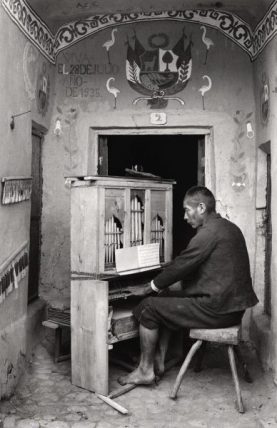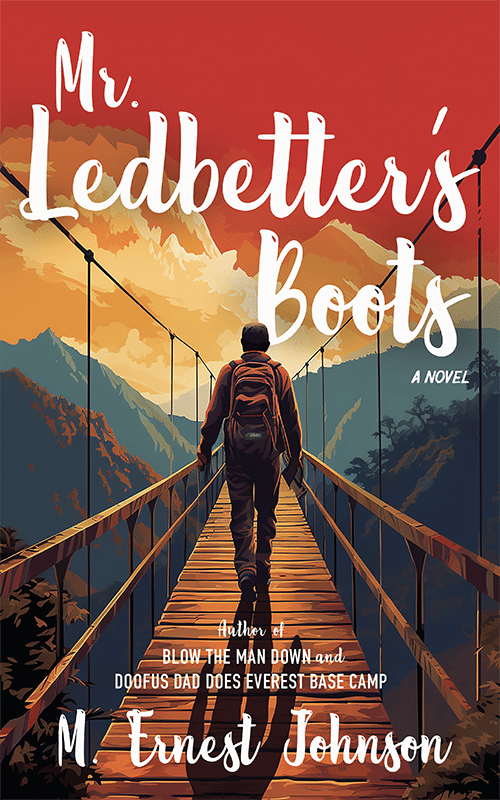Our international flight from Houston landed in Lima around midnight on the 2nd of September. Customs was surprisingly easy. No forms to fill out and there was a departure gate that said “Nothing to Declare.” We went through it and….were on the street in Lima? The Wyndham hotel was right across the street and the longest line of the entire day was to the front desk.
While we waited in line, I noticed a single, well-worn book on the coffee table. Intrigued, I took a look. It was by Martín Chambi Jiménez, one of the first major Indigenous Latin American photographers.
Of all the beautiful pictures, this one caught my eye. Look at this man’s massive foot and ankle!
This was actually a hint of things to come. The hobbits of Middle Earth would be impressed I think.

By 10:30am the next day, we were crossing the Andes on our way to Cusco. Cusco was the original center of the Inca before their influence expanded and it is one of oldest continuously inhabited cities in the entire Western Hemisphere. It’s a UNESCO World Heritage site. The population of over 500,000 lives across the ancient valley at an elevation of over 11,000 feet. Cusco is considered the “navel of the world” and the original city center is believed to be in the shape of a puma, one aspect of the Incan trinity representing the power of the earth and the land of the living.
At the airport, we were surprised and delighted to meet the owner of Alpaca Expeditions, Raul. Mark and Holly from Hobnail Trekking had set up a Zoom meeting with us all a couple of weeks earlier to go over the itinerary and ask questions. Of course, we didn’t know many questions to ask! We’ve not traveled like this before and it may have been a tad awkward, especially this first meeting.
But at the airport, Raul was relaxed and excited to see us, he was in his element and his home country. We were comfortable right away and his driver quickly whisked us away to our hotel, The Rumi Punku. And on the way I learned why I did not want to drive in Peru…
The Rumi Punku
The ancient downtown area of Cusco consists of narrow cobblestone streets between city blocks of both Incan and pre-Incan stonework. And even though the Spaniards tore down most of the city buildings in the 1500’s, they left much of the foundations and street network intact. This truly may have been because the stonework was so large and tight it was far easier to build adobe structures on top of it rather than try and tear it down!

So you have these city blocks with a perimeter of thick stone that define the narrow streets. In this photo, you see the rougher, pre-Inca stone (with mortar) on the left and the very smooth, mortarless Inca stone on the right side of the street.
You also get a feel for how narrow the streets are! These sidewalks are pretty typical! And the traffic can get pretty heavy, watch your step…
All of this massive stone and thick walls is pretty imposing and seems fairly impersonal. But along the walls are doorways that open up in to little shops. A restaurant with maybe six tables. Or maybe a farmacia with just what you need for a stomach bug. OR…it may open up into a central plaza with many shops, each plaza having its own special character.
You begin to realize that these thick walls isolate the street noise really well and provide a wonderful sense of security and peace.
And so we come to the Rumi Punku. In Quechua, the main dialect of the Inca, this means “stone gate.” The entrance is actually an original Incan entrance and is a double jamb, signifying it was a government or public entrance. When you step through the gate beyond the thick wall you find a most wonderful hotel. It really reminded me of the La Fonda in Santa Fe, New Mexico. It’s an architectural gem, an art gallery, and an incredibly friendly and cozy space all rolled in to one. Every angle is a picture, every object is thoughtfully considered. You can tell it is well-loved and well-cared for. And quiet. And….you’ll understand the importance of this later….it has a nice fountain of filtered water where you can conveniently fill up your water bottles.
A great tambo to rest from the busy day. Even at 5am, the fire is going and hot muña and coca teas are available. Breakfast included so many fresh fruits and juices too.
Ruben
Soon after we arrived at the hotel, we met Ruben, our first guide. We were supposed to walk to dinner to discuss the next two days of activities, which included ruins close to Cusco and a day trip in Sacred Valley, where he was born.
One of the most important things to consider on this odyssey is the altitude. It’s a big deal. Cusco sits at over 11,000 feet, Salkantay Pass over 15,000, and Rainbow Mountain passes 16,000. But even Lake Titicaca, adjacent to the altiplano (high plane) is at 12,400 feet!
The internet is abuzz (mainly from U.S. travelers) with all the benefits that coca tea has for altitude acclimation and sickness. It’s everywhere. Coca tea will solve all ills! Trying to do our research, with our biggest concern being acclimating to the altitude, we bought in, even buying some coca tea at the Lima airport so we could get started soon!
While waiting on Ruben at the hotel, Patricia had ventured down to the dining area and made herself a thermos of coca tea. When Ruben showed up, he introduced himself and then… promptly poured her tea down the drain! “Coca tea is for energy, but it will not help you with the altitude!” Ruben said it was a big mistake to drink it early on and that it would actually contribute to a lack of sleep and unsteadiness. He said that after three days it would be perfectly fine to try, but based on his 27 years as a guide, muña tea is the way to go. It helps both with the adjusting and with the digestion. Muña, or Andean mint, is actually a distant relative of the mint family, it is prevalent and quite good. So we followed the master’s advice.
Ruben walked us down to the Pachapapa restaurant, where the small entrance opened into a large courtyard under the sky and a large adobe wood-fired oven, something that we would see everywhere.
As we discussed the itinerary over candlelight, I realized that he was not talking to the owner in Spanish, but Quechua, his native tongue.
It was all a bit mysterious. And just so comfortable.
Ruben is 50 years old and grew up in Sacred Valley. He is Mestizo, half Spanish and half Inca lineage. At age 8, when he started school, he was taught Spanish. As he worked his way to becoming a guide, he worked through a one-year English language intensive. We would come to learn, and be humbled by, how hard these guides work to learn other languages.
Ruben is a force of nature. And he made the next two days quite an adventure. But that wouldn’t start until the afternoon. In the morning we had some time to explore the city as we continued to acclimate to a town that is literally a MILE above the MILE HIGH city of Denver, Colorado.
See the Peruvian Odyssey trek page HERE.












Recent Comments